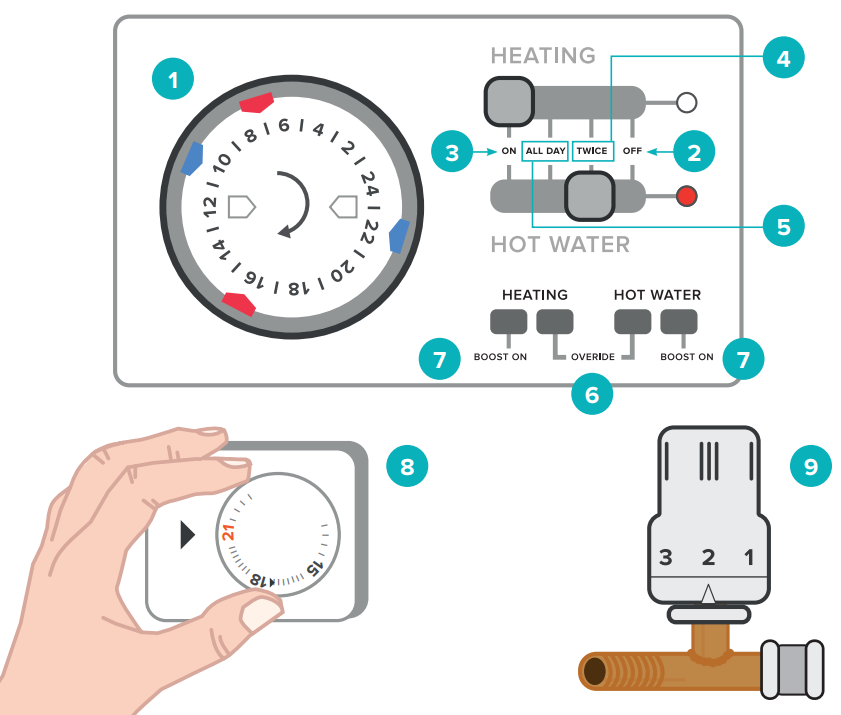Using your central heating system – National Energy Action leaflet
Last updated April 2023
We have produced a series of advice leaflets to help you with your energy bills, including this one which concerns using your central heating. If you are not on central heating, but wish to be, then the government has some support available.
Central heating is designed to keep all or most of the house warm from a single, central point of heat such as a boiler. Boilers use a variety of fuels such as solid fuel, oil, liquid petroleum gas (LPG) or natural gas to heat water which is carried around the home through pipes. The heat is then emitted into the room, usually through radiators.
It is important that central heating is controlled as much as possible to make sure you have heat when you need it. This will help you to keep fuel costs down.

- TIMER:
First you must set the correct time of day, then set the timer control using the tappets if it’s mechanical or buttons and display if it is electronic.
There are four tappets on the clock dial, the orange tappets mean ON and the blue tappets mean OFF. Simply move the tappets to the time on the dial that you want your central heating to switch ON and OFF in the 24- hour period.
Remember, there will be a warm-up period from when the central heating comes on up to when the property feels warm, so set the timer for about half an hour before you get out of bed, or for when you return home. It also takes time for the property to cool down again, so you can set it to go off half an hour before you go out or go to bed. - OFF:
This means OFF permanently, ignoring programmed times. - ON or CONTINUOUS or CONSTANT:
This means ON permanently, ignoring programmed times and never switching off. - TWICE or TIMES or AUTO:
This allows you to set two heating periods on the clock. Some programmers allow more than two periods, in which case this might be called ALL. - ALL DAY or ONCE
Refers to one heating period from the first ON setting to the last OFF setting in the day, as set on
the clock. This provides one long heating period as opposed to TWICE and is often useful for cold weekends. It is therefore a more expensive setting mode than the TWICE option. - OVERRIDE or ADVANCE:
This allows the heating to be turned on or off when there is a change to the usual heating routine but without changing the programme. The system will revert to the set programme afterwards. - BOOST:
This will override the system to allow for heating or hot water to come on as an instant top-up
when needed, usually for an hour or two. - ROOM THERMOSTAT:
To prevent it becoming too hot or too cold in your home, during cold weather you should keep any
room thermostats set to around 21°C in the room in which you spend most of the time or 18°C in
any other rooms. When the weather gets colder, increase the amount of time you have your heating on rather than turn up the thermostat. - THERMOSTATIC RADIATOR VALVES (TRVs):
You may also have TRVs fitted to your radiators. These allow you to control the heat from an individual radiator according to your needs.

